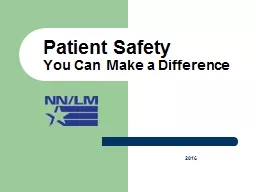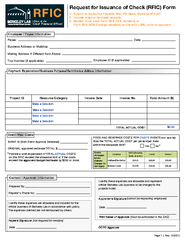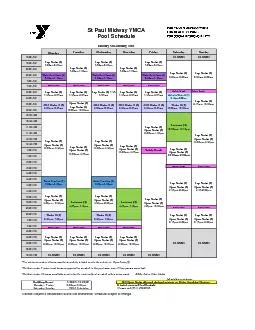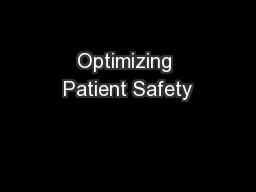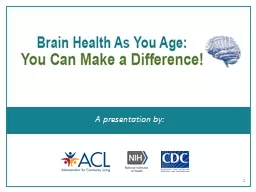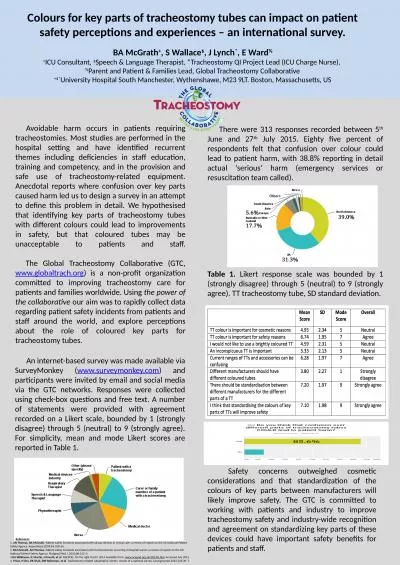PPT-Patient Safety You Can Make a Difference
Author : mitsue-stanley | Published Date : 2019-11-22
Patient Safety You Can Make a Difference 2016 Patient Safety is in the News HEADLINES Doctorcut off wrong l eg Sponge left in womans body One in six NHS patients
Presentation Embed Code
Download Presentation
Download Presentation The PPT/PDF document "Patient Safety You Can Make a Differenc..." is the property of its rightful owner. Permission is granted to download and print the materials on this website for personal, non-commercial use only, and to display it on your personal computer provided you do not modify the materials and that you retain all copyright notices contained in the materials. By downloading content from our website, you accept the terms of this agreement.
Patient Safety You Can Make a Difference: Transcript
Download Rules Of Document
"Patient Safety You Can Make a Difference"The content belongs to its owner. You may download and print it for personal use, without modification, and keep all copyright notices. By downloading, you agree to these terms.
Related Documents

